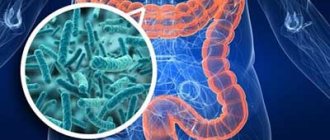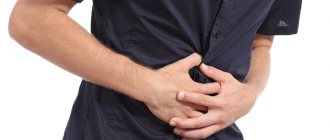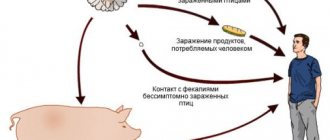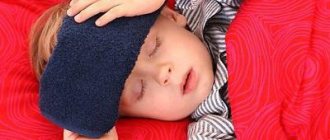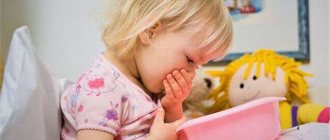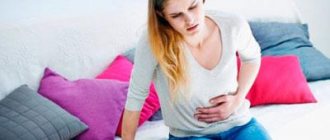Restoring water-salt balance
The first stage in the fight against rotavirus infection is replenishing fluid in the body. The disease is accompanied by dehydration - water, salts, glucose, electrolytes and microelements are lost. Without them, the organs of adults and children do not function.
Recovery from rotavirus is impossible without drinking. Severe diarrhea leads to dehydration; Give the patient a rehydration solution, purchased at a pharmacy or prepared independently.
- 1 liter of warm boiled water;
- 1 tbsp. salt;
- 2 tbsp. Sahara;
- 1/2 tsp. soda;
- 100 g raisins, lemon or ginger.
Mix the ingredients, drink a couple of tablespoons every two hours; if severe vomiting occurs, give a teaspoon every 15 minutes; Give the child something to drink from a pipette every 5 minutes. Alternation with teas and decoctions will help not to disturb the salt balance.
If it is impossible to stop vomiting and loose stools, resort to hospitalization. In the hospital, dehydration will be prevented with medications and IVs.
Recovery from an intestinal infection in children is accompanied by a decrease in immunity - introduce fresh vegetables, fruits (citrus fruits) with vitamin C into the diet.
Symptoms of rotavirus infection
When a spherical pathogen enters the body, unpleasant manifestations make themselves felt quite quickly; the incubation period lasts from 1 to 5 days. If a person is weakened, the disease develops rapidly, within 15 hours.
The danger of the disease is that its symptoms can manifest differently in people depending on age and individual characteristics of the body. There are cases when the virus penetrates the body, but it fails to penetrate cells, and the disease is asymptomatic.
The first manifestations resemble signs of a respiratory illness: the patient has a sore throat, a runny nose, and a cough. This is where the second name of the disease comes from - intestinal flu.
After some time, the initial symptoms are supplemented by new phenomena.
- General weakness, decreased or complete lack of appetite. This is more common among adults.
- Nausea and vomiting.
- Diarrhea, characterized by watery, pale yellow feces with a strong odor.
- Urine becomes darker and its total amount decreases.
- Pain and rumbling in the stomach.
- Children's temperature rises, often to high levels. In adults, it remains within normal limits, or the increase is slight.
- With severe vomiting and diarrhea, dehydration occurs.
Important! It happens that in adults the symptoms are not pronounced, so the resulting malaise is attributed to poisoning from poor-quality products. Such patients, despite the absence of acute painful manifestations, are potential spreaders of the virus to others.
Peculiarities of children's symptoms
In children, the disease usually has a more acute course compared to adults:
- temperature rise to 38 degrees or higher, possible fever;
- severe nausea and vomiting;
- diarrhea, sometimes difficult to control, the number of bowel movements can reach 15-20 times a day;
- severe weakness, lethargy, drowsiness.
Important! For young children, the main danger of the disease is that it leads to dehydration. The smaller the baby’s body weight, the faster this process develops. Therefore, children under 2 years of age with severe illness are subject to urgent hospitalization.
How long does the disease last? The period of acute manifestations ranges from 3 to 7 days, a more severe course of the disease is possible, which lasts over a week. After acute symptoms no longer make themselves felt, a recovery period of 4-5 days begins.
Cleansing the body
Rotavirus attacks the intestinal microflora, leading to intoxication of the body. The second stage of treatment is the removal of toxins.
To get rid of rotavirus and toxins, the patient is prescribed enterosorbent medications that bind toxins, remove them from the body, and normalize digestion.
Antibiotics are not used: they do not fight the virus, disrupt the functioning of the inflamed intestines, killing beneficial bacteria.
If you have an intestinal infection, you should not treat the symptoms - runny nose and cough. The symptoms will go away after the virus is eliminated from the body. Additional medications (antibiotics) will weaken the body. Antibacterial medications will aggravate the condition and increase diarrhea in children.
There are no drugs that kill rotavirus. The only way to improve digestion and stool is a restorative diet that excludes foods that are dangerous for a patient with rotavirus infection.
Necessary measures in case of poisoning
To get rid of signs of poisoning, it is necessary to perform gastric lavage. For this, a weak solution using potassium permanganate (you can use soda) or boiled warm water is usually used. This procedure must be repeated several times until clean water begins to come out of the stomach.
After this procedure, it is recommended to take adsorbents. Activated carbon is often used for this. It is better to check the dosage and regimen of taking tablets with your doctor.
The third measure is to drink plenty of fluids. Not only with diarrhea, but also with vomiting, the body is deprived of a large amount of fluid. To avoid dehydration, you should drink water (preferably boiled) frequently. Jelly, weak sweet tea, and fruit drinks are also very useful in this case.
The victim should be at rest for several days. On the first day, you need to stop eating solid food, then you can start eating soups (rice is good) and mucous decoctions. A special diet will help you quickly recover from food poisoning.
If the poisoning is caused by mushrooms or there is suspicion of botulism, then you should not hesitate and immediately seek professional medical help.
You should also consult a doctor if the victim is a small child or an elderly person. Medical assistance will be necessary if the symptoms of poisoning are very strong and do not subside in the first day after self-medication or last more than a week. A high temperature and yellowness in the whites of the eyes indicate that the process is spreading to the liver, so you should not hesitate to contact a specialist either.
Diet for rotavirus
The third stage of recovery is proper nutrition. A method of intestinal rehabilitation after rotavirus infection is diet.
Prohibited Products
Rotavirus destroys the enzymes in the intestine that are responsible for the breakdown of lactose; lactose intolerance occurs in children from 6 months to 5 years of age. Eliminate milk and dairy products from the diet. Sour cream, cheese, cottage cheese, milk, kefir, low-fat homemade yoghurts cause irritation of the intestinal tract - remove from the diet at the first manifestation of rotavirus infection.
Adults - refrain from coffee, caffeinated drinks, fried, fatty foods that aggravate intestinal inflammation. The body in a healthy state has a hard time tolerating the mentioned food.
Mothers of children infected with rotavirus complain that the child does not eat. The reason is impaired intestinal function and the inflammatory process. When your appetite appears, avoid eating the listed foods until you recover, focus on drinking plenty of fluids, and replace unhealthy drinks with juices, fruit drinks, and compotes.
Diet for rotavirus in adults
For adults, the consequences of the infection are not so difficult, but diet is required. Rotavirus affects the gastrointestinal tract in adults who lead a healthy lifestyle and do not have stomach problems; the disease is the cause of weight loss.
For adults, porridges, mainly semolina and rice, will help to recover from rotavirus - they envelop the intestinal walls. Use broths with crackers, lean boiled meat, fish without salt and spices. Avoid dairy products. Grated low-fat cottage cheese is allowed.
Follow the drinking regime, you need a lot of liquid, vary it with blueberry, raspberry, currant infusions, dried fruit compote, tea.
An adult with rotavirus infection is advised to avoid baked goods, brown bread, dried fish, sausages and smoked meats, spicy and salty foods.
After diarrhea and pain decrease, gradually eat lean meat, fish, mashed potatoes, and vegetable soups.
Those who have recovered from rotavirus benefit from seasonal fruits, vegetables, fruit and vegetable purees, fresh berries, jam, honey (with the exception of individual intolerance).
Diet for rotavirus in children
It is more difficult for children, especially infants, to cope with rotavirus infection. During the first day, vomiting and diarrhea are frequent, which causes intoxication, dehydration and dysbacteriosis.
It is necessary to provide the child’s body with the necessary nutrients and microelements.
Dairy products are not allowed; during recovery, replace with tea with mint or ginger. For infants in the absence of breast milk, a rehydration solution is suitable. Avoid lactose-based formulas: they will worsen diarrhea.
During the acute period and the recovery period after rotavirus infection, the child should not be forced to eat, even if he has lost weight, so as not to cause vomiting and diarrhea. Gradually, the child will begin to eat the norm for the body.
Food should be warm and pureed to avoid thermal and mechanical damage to the gastrointestinal tract. Offer your baby jelly, rice cooked in water, and chicken broth.
As you recover, add:
- mashed potatoes;
- lean meat;
- baked apples;
- low-fat cottage cheese and kefir;
- white bread croutons for the broth;
- bananas.
The introduction of products is prescribed at the rehabilitation stage. at least the fifth day after the onset of the disease.
How does the disease progress?
Despite the fact that rotavirus is considered an intestinal infection, it begins to infect the human body from the upper respiratory tract. It is observed more often in children under 5 years of age. It is during this period that the immune system is easily exposed to the virus, which is why children get this disease more often than adults. Rotavirus affects the mucous membranes of the intestines, stomach and duodenum, causing disorders and dehydration.
The virus, entering the child’s body, may not manifest itself in any way during the first 5 days (incubation period). Afterwards comes the stage of exacerbation and during this period the first signs begin to appear. The child begins to worry and cry for no apparent reason. It gets especially bad for him on the first day.
The pathogens are released along with the feces, so the sick person is considered a carrier of infection to all family members and others.
This lasts for a week and only after this period does it cease to be contagious. After treatment, recovery from rotavirus infection in children is required. Only after this can the child be released to school or kindergarten, but provided that he does not experience a relapse.
What mothers should pay attention to
Mothers complain of child lethargy after rotavirus. A balanced diet, vegetables, fruits rich in vitamins, and fresh air help to recover.
I’m interested in what day is it permissible to wash. It is necessary to wipe the child with a damp towel in the first days of illness, when the high temperature does not allow swimming. After the temperature subsides, it is permissible to wash in the bathroom or take a shower.
Moms ask about walking with rotavirus. It is easily transmitted to others - the sick person is isolated from healthy children, provided with individual utensils and hygiene items. Take a closer look at how the child recovers from an illness and at his nutritional habits.
The condition improves on days 3-5, the temperature drops, and the baby is bathed. You should not have contact with healthy children; avoid going for walks.
10-15 days after the onset of the disease, intestinal function normalizes, the child becomes active and begins to eat. It is permissible to walk outside, not forgetting about hand hygiene: immunity to rotavirus is not developed, and there is a possibility of relapse.
You should refrain from going to the bathhouse or public places with your child to avoid infecting others. The baby's room and used areas are disinfected.
The diet for intestinal infections consists of several different menus that are prescribed separately for both children and adults. Its main goal is to replenish lost microelements and restore water balance in the body.
It is prescribed exclusively by a therapist, since even an incorrectly chosen diet can harm a person’s dehydrated system.
Preventive actions
First of all, treat the apartment with a disinfectant, strictly monitor personal hygiene, wash your hands:
- before and after meals;
- before and after going to the toilet;
- upon returning home from the street.
In addition to hygiene, you need to monitor the freshness, cleanliness and quality of food - apples, for example, should not just be wiped, but washed. Treat toys if there are several children and one of them is sick.
Buy dairy products fresh and in stores, not at random outlets.
Is it possible to get re-infected with the virus?
You can become infected after recovery and repeatedly. Children are more often infected. Then, as they grow older, their gastrointestinal tract becomes more resistant to bacteria. That's why adults get sick much less often than children. True, much depends on the body’s reserve forces and the individual characteristics of the digestive system.
Diet for intestinal infection - the basics
For most infectious diseases of the digestive tract, you can follow the BRAT diet, which is approved and recommended by many medical societies.
The acronym lays out the principle of nutrition, but this does not mean that you are obliged to eat only rice and bananas. The basics are to eat bland foods that do not irritate the intestines.
They contain very little fiber and can help stop diarrhea and normalize bowel movements.
Nutrition for intestinal infection:
- broths;
- boiled cereals, such as oatmeal or semolina;
- crackers;
- boiled potatoes.
- weak tea;
- apple juice or still mineral water.
List of foods that should be avoided while symptoms of the disease appear:
- milk and fermented milk products;
- anything fried, fatty or spicy;
- animal proteins such as pork, fatty fish;
- raw vegetables, including salad greens, carrots, broccoli, tomatoes and cauliflower;
- fruits such as pineapple, orange, grapefruit and apple;
- very hot or cold drinks;
- alcohol, coffee or other compounds containing caffeine.
During the first six hours of illness, you may not eat anything at all. Wait until the vomiting and diarrhea stop.
Before starting the BRAT diet, you can start by sucking on popsicles (frozen juices) and drinking rehydration or sports drinks.
This will help replace the water and electrolytes that were lost during the height of the pathology. You should try to constantly replace fluid losses. Try drinking a little water every 10 minutes.
After the first day of illness, begin to follow the recommended diet. This diet is low in calories, so you won't want to stay on it any longer than necessary.
On the third day, you should try to slowly add normal foods back into your diet. Start with soft-boiled eggs, roasted vegetables, and chicken or turkey.
It is important to monitor your own body’s reactions. If you eat too much, symptoms may return.
www.healthline.com
Acute intestinal infections: what mistakes should a first-time traveler not make?
Acute intestinal infections AII is a large group of human infectious diseases with an enteral fecal-oral mechanism of infection caused by pathogenic Shigella, Salmonella, etc. ACI still occupy a leading place in the infectious pathology of childhood, second only to influenza and acute respiratory infections in terms of incidence. The leading component of treatment for acute intestinal infections is a rational therapeutic diet, adapted to the age of the child, the nature of the previous disease and feeding. The goal of diet therapy is to reduce inflammatory changes in the gastrointestinal tract, normalize functional activity and digestive processes, and maximize sparing of the intestinal mucosa. Excluded from the diet are stimulants of intestinal motility, foods and dishes that enhance the processes of fermentation and putrefaction in the intestines: raw, sour berries and fruits, juices, raw vegetables, pure butter and vegetable oils, sweets, fresh baked goods. Do not give legumes, beets, cucumbers, sauerkraut, radishes, oranges, pears, tangerines, plums, grapes.
Menu for children
It is important to follow the principles of nutrition not only during the acute period of the disease, but also to maintain restrictions on certain foods for another two to three weeks, otherwise unpleasant symptoms may return.
Even if your child has a good appetite, do not allow him to overeat. It is better to eat often and in fractional portions.
In conditions of a limited diet, it is important to make the menu so that the dishes are varied and do not repel the child. For breakfast, you can prepare an omelet with tea and breadcrumbs, rice or oatmeal.
For lunch, offer him vegetable soup, broth, meat with rice or steamed buckwheat, and boiled fish. As a drink - rosehip juice. Dinner can consist of a steamed fish cutlet, porridge, carrots and applesauce. For dessert, baked apples and bananas will do. As your health returns, you can add dried white bread, lean cooked meat and fish, meatballs and low-fat cutlets.
Vegetables are served boiled, in the form of puree: zucchini, pumpkin and broccoli. Fermented milk products should be low in fat: yogurt, cottage cheese, fermented foods. Whole milk should be given only three weeks after recovery.
You can buy it at the pharmacy or prepare it yourself: dissolve 2 tablespoons of sugar, 1 teaspoon of salt and ½ soda in a liter of boiled water.
Instead of water, you can use raisin decoction. In addition to the above, you can give your baby rice or chicken broth and water.
Diet and its role in the treatment of rotavirus infection
Diet after rotavirus helps restore the intestines:
- Exclusion from the diet of milk and dairy dishes, except maternal milk, if the child is too small. Temporarily replace it with plain water or herbal teas. With mint - to eliminate nausea, with ginger - if the stomach hurts after rotavirus in a child.
- Dishes should be light and healthy, for example: soups, broths, mashed potatoes, vegetable juices. If the child is on the mend, you can add yogurt to the menu to restore intestinal flora.
- Adults should follow diet No. 4. It includes the consumption of crackers from white breads, fish, broths cooked in water, semolina and rice porridge. Salt should be completely eliminated during treatment.
- Recommended drinks include: plain water, decoctions and teas of blackcurrant or raspberry, cocoa not with milk, but with water.
- After diarrhea decreases, when the child’s rash after rotavirus goes away, you can include vegetable dishes, soups, seasonal fruits, vegetables and berries in the diet.
- During the period of therapy, you should completely avoid barley and pearl barley porridge, cabbage (white cabbage), pasta, garlic, smoked meats, pickles, onions, fatty foods, carbonated drinks, hot seasonings, and coffee.
What products are allowed for adults?
Foods to avoid until you feel better:
- spicy and fried foods;
- any alcohol;
- caffeinated drinks because they dehydrate the body;
- dried peas or beans;
- raw vegetables or fruits (except bananas);
- Whole grain bread, cereals or bran;
- Milk or fermented milk products (cheeses, yoghurts, kefir);
- nuts, seeds, coconuts, popcorn.
Diet plan for intestinal infection in adults as you recover.
- clear soup or broth, miso;
- mineral water (you can add a little sugar and stir), but not diet soda.
- diluted apple or cranberry juice (not orange);
- tonic sports drinks;
- pure water;
- crackers;
- lollipops;
- weak tea with honey or sweetener.
Step 2 (Everything from step 1 plus):
- applesauce;
- bananas;
- mashed potatoes;
- boiled pasta;
- rice without oil, margarine or sauce;
- refined cereals such as rice cakes, puffed corn, cereal, semolina;
- toast (white or light rye bread) with jelly.
Step 3 (everything that applies to points 1 or 2 plus):
- baked or boiled lean poultry or fish;
- boiled eggs;
- well-cooked vegetables and fruits without seeds or skins;
- sherbet.
When the food of the current level is absorbed by the body, move on to the next one. The progression of steps can be rapid, from one meal to the next as soon as you feel better. Most people return to their normal diet within 2 to 3 days.
If you find that a specific food makes you feel worse or worse, then remove it from your diet.
www.brown.edu
How to recover from an intestinal infection
Eating large amounts of food can cause cramping and diarrhea, so it is better to eat more often, but in smaller portions. In addition, the nutrition of children should be different from that of adults.
Peculiarities of nutrition in a child
In the first days, you need to boil or steam all the ingredients. Only if there are no signs of deterioration, you can start giving baked and fried foods.
Some foods and drinks can cause increased symptoms of the disease: those with a high fat content, milk, caffeine, as well as gas-forming legumes and melons.
www.philly.com
Which recovery method is suitable for an adult?
It is necessary to expand the diet after special nutrition gradually, based on the principles of eating relatively soft foods with a low fiber content.
Example of some acceptable products:
- chicken, turkey, fish, tender cuts of beef and pork, lean minced meat, eggs, creamy nut butters, tofu, low-fat hot dogs.
- juices without pulp, bananas, avocados, apple sauce, canned peaches and pears, boiled fruits without skin and seeds;
- well-cooked or canned vegetables, skinless potatoes, tomato sauces, vegetable juices.
my.clevelandclinic.org
What is the situation with the liver?
It is known that the liver acts as a filter in our body. It constantly cleanses the body of accumulated harmful substances without rest. Poisoning can also harm this important organ. Medicines with hepatoprotective action will help restore its function. It is better to take herbal preparations. To do this, you should consult a doctor.
Amino acids and vitamins with antioxidant effects (C, A, E) will also help the liver function well.
Nutrition for bacterial form
If you have a mild form of the disease, plain water will help replenish fluid lost from diarrhea.
Drinking sports drinks can also be a good recovery method since they contain glucose and some electrolytes. It is necessary to exclude carbonated drinks, but you can safely drink mineral water without gases.
Once you have taken care of the balance of minerals, electrolytes and fluids, you can begin to eat light and soft foods when you first feel hungry and have an appetite.
Until complete recovery from the bacterial form of infection, you will have to give up spicy, fatty and fried foods, as they can provoke an exacerbation of symptoms.
Fruit juices or meatless soups can help you replace lost salts. Children will benefit better from decoctions and vegetable broths.
This means that the lactose in dairy products can make you feel discomfort throughout your stomach. More often, this condition leads to a worsening of the main symptoms of the disease.
However, avoiding dairy products can be difficult in infants and young children, since milk is often the only thing they still want to eat.
Then it is necessary to continue feeding the child, but in small portions and add fluids to the diet for rehydration.
www.bupa.co.uk
Which doctor treats intestinal flu?
It is prohibited to independently establish a treatment regimen and select medications. This should be done by a pediatrician for children and a local therapist for adults (for mild forms). In fact, the disease is treated by an infectious disease specialist and a gastroenterologist. After the main therapy, you need to undergo a recovery course. During this period, you should contact a nutritionist.
What to eat if you have a viral infection
You need to drink plenty of fluids. They are critical because you lose vital body fluids through sweating, vomiting and diarrhea.
If you have trouble drinking water solutions, try taking small sips at regular intervals or chewing ice cubes.
Best suited for rehydration purposes: pure water, sports drinks, special commercial medical liquids, decoctions, broths and weak teas. Avoid coffee, alcohol and hot chocolate.
It is important to start eating only when you already feel that you are ready and the food does not cause disgust and does not increase the signs of pathology.
Bananas, rice, applesauce and toast are the minimum set of foods that will allow the body to recover without stressing the intestines. Such ingredients contain a lot of sugar and are effectively absorbed even if the digestive tract is damaged.
Therapeutic nutrition for viral infection:
- Bananas are easy to process, can replenish potassium that is lost through vomiting and diarrhea, and also strengthen the lining of the stomach and small intestine.
- White rice is easy for the body to digest and provide energy from carbohydrates.
- Applesauce is rich in sugars and pectin, which can help normalize bowel movements.
- Avoid whole grain breads as fiber increases peristalsis and worsens symptoms. Only white bread has a beneficial effect during the acute period.
www.healthline.com
Symptoms of intestinal infection
Manifestations of the disease in adults and children are similar.
- Diarrhea. Stool disorders accompany every intestinal infection. Depending on the pathogen, the nature of the stool may vary: green in salmonellosis, streaked with blood in dysentery, rice-water type in cholera.
- Nausea and vomiting.
- Headaches and stomach pains.
- Temperature increase.
- Dehydration. It grows rapidly in children, especially under the age of 1 year.
- General weakness, fatigue.
Possible complications
- Stomach or intestinal bleeding.
- Hypovolemic shock. Due to dehydration, the volume of circulating blood drops sharply. The patient's condition becomes very serious.
- Kidney failure. Due to dehydration, the volume of urine excreted per day decreases, lower back pain appears, and kidney function is impaired.
- Pulmonary failure. Hypoxia, shortness of breath.
What other treatments can be used?
After examination by a doctor, additional medications may be prescribed to treat diarrhea and vomiting . This is decided based on complaints and symptoms, general condition. Enzyme preparations should not be prescribed in the acute period of diarrhea; they can intensify the manifestations of diarrhea and thereby worsen the general condition of the baby. Certain medications may be prescribed during the recovery stage, when the child begins to eat solid foods, to help with digestion and relieve irritated digestion. Usually a course is prescribed for two weeks with a gradual, once every three days, dose reduction. It is worth remembering: enzymes are not abruptly canceled, this can provoke a breakdown in digestion. For abdominal pain caused by seething , increased peristalsis and spasms, drugs to reduce gas formation (simethicone or sub-simplex, espumizan) and sorbents can be prescribed. For severe peristalsis, loperamide is prescribed; for spasms, papaverine or no-spa can be used. Antidiarrheal drugs or anti-vomiting drugs in children are used only in extreme cases and mainly in the hospital, since diarrhea and vomiting are the body’s protective reactions to infection or poisoning. This way the body gets rid of germs, viruses and toxins. As a remedy for diarrhea, drugs such as smecta or drinking rice water are most often used. The use of various biological drugs in the acute period does not make sense; they will be excreted along with the stool, and if an antibiotic or intestinal antiseptic is taken, they will be killed by these drugs. It is worth remembering that with short infections or taking antibiotics for a short period of time, the intestinal microflora does not suffer significantly, and after the end of the course of treatment it recovers on its own within 10 days. If the body is weakened and there are frequent illnesses or a long period of unstable stool, a course of probiotics in the form of acipol, enterol, probifor, bifi-form can be prescribed after an acute period of illness. Taking these drugs should last for at least 7-10 days with the parallel prescription of therapeutic and prophylactic products with bifido- and lactoflora (kefir, acidolact, biolact).
Treatment of intestinal infection
The patient's condition and the nature of the infection are fundamental factors in selecting a treatment regimen.
General
- An antibiotic that acts on the pathogen.
- A drug for restoring intestinal microflora (Linex, Bifiform).
- Drink plenty of both plain boiled water and special solutions (rehydron). In case of dehydration, droppers are prescribed (Ringer's solution, Acesol, saline solution).
- Adsorbents (charcoal, enterosgel).
Diet therapy
Adults and children are not breastfed.
- You should eat 5-6 times a day in small portions.
- Mechanical, thermal and chemical sparing of the gastrointestinal tract. All food should be warm, steamed, boiled or baked, easily digestible. It is necessary to exclude sour, spicy, fatty, fried, canned foods.
- Food should be rich in protein and quality carbohydrates. Rice porridge, buckwheat with water, meatballs and cutlets from veal, rabbit, turkey, chicken.
- Consumption of fermented milk products with a low fat content. In addition to the nutritional effect, kefir and yogurt are a source of lacto- and bifidobacteria, which are necessary to restore intestinal microflora.
- Excluded from food: fresh vegetables and fruits, sweets, flour, milk. It is undesirable to consume foods that stimulate gas formation: cabbage, legumes, grapes.
- From the very beginning, you need to give the patient more boiled and baked vegetables and fruits (apples, potatoes). During the digestion process, pectin is released from them, which has an adsorbing property. Passing through the intestines, it collects the remains of waste and toxins, helping to improve the patient’s condition. Today in pharmacies there are drugs whose main active ingredient is pectin (Pepidol), they can be given even to small children.
Infant nutrition
The optimal food for infants was and is mother's milk. It is best to adhere to the free feeding regime (but not less than every 2 hours, 50 ml). If necessary, the baby should be woken up. Then the child will receive a sufficient amount of food balanced in all nutrients. If the mother takes pity on the baby, does not wake her up for feeding and refuses to try to supplement the child against the will of the child, then complications may develop (hypovolemic shock, renal and cardiovascular failure).
If the child is bottle-fed or bottle-fed, then the choice is made in favor of lactose-free or low-lactose formulas (Nutrilon, Humana, Frisopep). If a child needs supplemental drinking, then special solutions (for example, rehydron) are prescribed.
Children receiving supplementary feeding can eat rice and semolina porridge with water, cottage cheese, jelly, hard-boiled yolk, meatballs, and vegetable puree.
After recovery, the recovery process continues for a long time, depending on how severe the infection was.
You should continue to follow the diet for at least 2 weeks, then you can slowly begin to introduce new foods.
For a month, medications are taken that restore the intestinal microflora (Linex, Bifiform, Primadophilus).
If necessary, you can take enzymes (mezim, panzinorm, festal, wobenzym).
Gut restoration
In addition to the stomach, it is very important to restore the harmonious functioning of the intestines. The intestinal microflora is disrupted during poisoning, so it is necessary to bring the organ into balance.
A healthy intestine is home to a whole community of bacteria that are beneficial to our body. They help to properly digest food and separate proteins, vitamins and other useful components from it. Common representatives of intestinal microflora are bifidobacteria and lactobacilli. Along with them, E. coli, enterococci and bacteriodes are also observed in the microflora. Their total number is ideally 99% and only 1% are pathogenic bacteria.
Normal intestinal microflora is designed not only to regulate digestion, but also to protect the body from the invasion of pathogenic microbes and bacteria. Well-coordinated functioning of the intestines ensures harmony throughout the body, including supporting the immune system. During food poisoning, this harmony is disrupted, causing intestinal dysbiosis, which has many unpleasant consequences. For example, you may experience constipation or loose stools, bloating in the abdomen, pain in the same area, as well as poor digestion of food.
Dysbacteriosis very often develops after antibiotic therapy.
If the poisoning is mild, then there is usually no need to try to restore the body with special means. In the case of the intestines, a regular diet is also very useful, following which the body itself will cope with harmful bacteria. Dietary nutrition helps to set up the normal functioning of the organ, has a beneficial effect on its mucous membrane and creates good conditions for the proliferation of beneficial microflora.
Very useful:
- eat food in small proportions;
- take easily digestible food during the recovery period;
- do not wash down food with water;
- exclude simple carbohydrates;
- eat foods that contain a lot of fiber (vegetables and fruits);
- exclude fatty or fried foods;
- choose stale bread.
Drinks such as sweet soda, alcohol, and coffee have a rather negative effect on intestinal function.
You can restore your intestinal microflora with the help of certain products. For this, it is extremely useful to consume fermented milk products, which contain living cells of beneficial microorganisms. Fermented milk products enriched with essential lacto- and bifidobacteria help balance the microflora and thereby eliminate unpleasant dysbacteriosis.
It is also useful to eat sauerkraut, bread kvass and pickled apples. Foods such as dried fruits, garlic, sour berries, wheat bran, herbs and fresh vegetables and fruits also have a beneficial effect on the functioning of the organ.
To put the intestines in order, you can resort to medications. For example, probiotics and so-called prebiotics have proven themselves to be excellent. In the first option, the composition may contain several types of living bacteria, with the help of which it is possible to renew the microflora. In the second option, there are no such bacteria in the composition, but there are chemicals necessary for their growth and reproduction.
You can buy such drugs at any pharmacy; they are available in the form of tablets or capsules. Before taking, you should consult your doctor to assess the degree of microflora damage and choose the correct dosage.
Prevention of intestinal infections
- Compliance with personal hygiene rules. Washing your hands before eating.
- Eating thoroughly washed vegetables and fruits and properly heat-treated foods. You can’t eat expired food, no matter how sorry it would be to throw it away.
- Water can only be drunk boiled or bottled.
- You should prefer homemade food and refuse a variety of ready-made products, especially fast food from dubious stalls.
So, both adults and children can get an intestinal infection. Treatment is basically the same, if you do not take into account breastfed children. The main feature lies precisely in the recovery process, which depends on a properly defined diet.
School of Dr. Komarovsky, topic “Intestinal infections”:
TV show “We wish you good health”, topic “Intestinal infection”:
Prevention of intestinal microflora disorders
As preventive measures to prevent dysbiosis, a whole complex is meant, which requires adherence to a balanced diet, taking certain medications, and even a radical change in the usual lifestyle.
The most accessible and easy to implement ones are as follows:
- mandatory breaks during sedentary work;
- walking for at least 30 minutes a day;
- systematic hardening procedures;
- if there is no exacerbation of the intestines, daily consumption of berries, fruits and fresh vegetables is advisable;
- the usual menu should include vegetable fats, fermented milk products, meat and fish only in boiled form;
- drug prevention with the use of probiotics, prebiotics and symbiotics;
- Avoid psychological stress and overexertion in every possible way.
